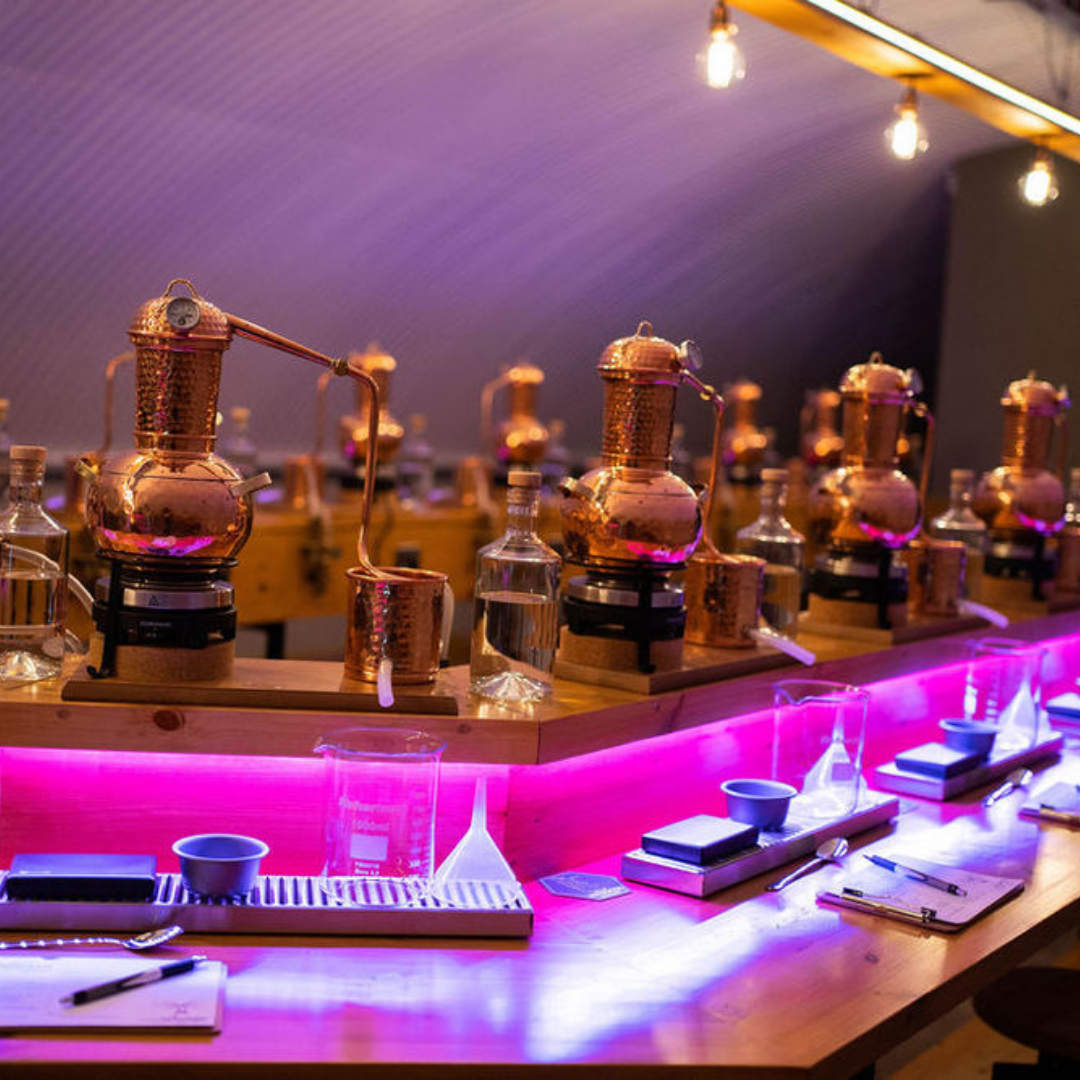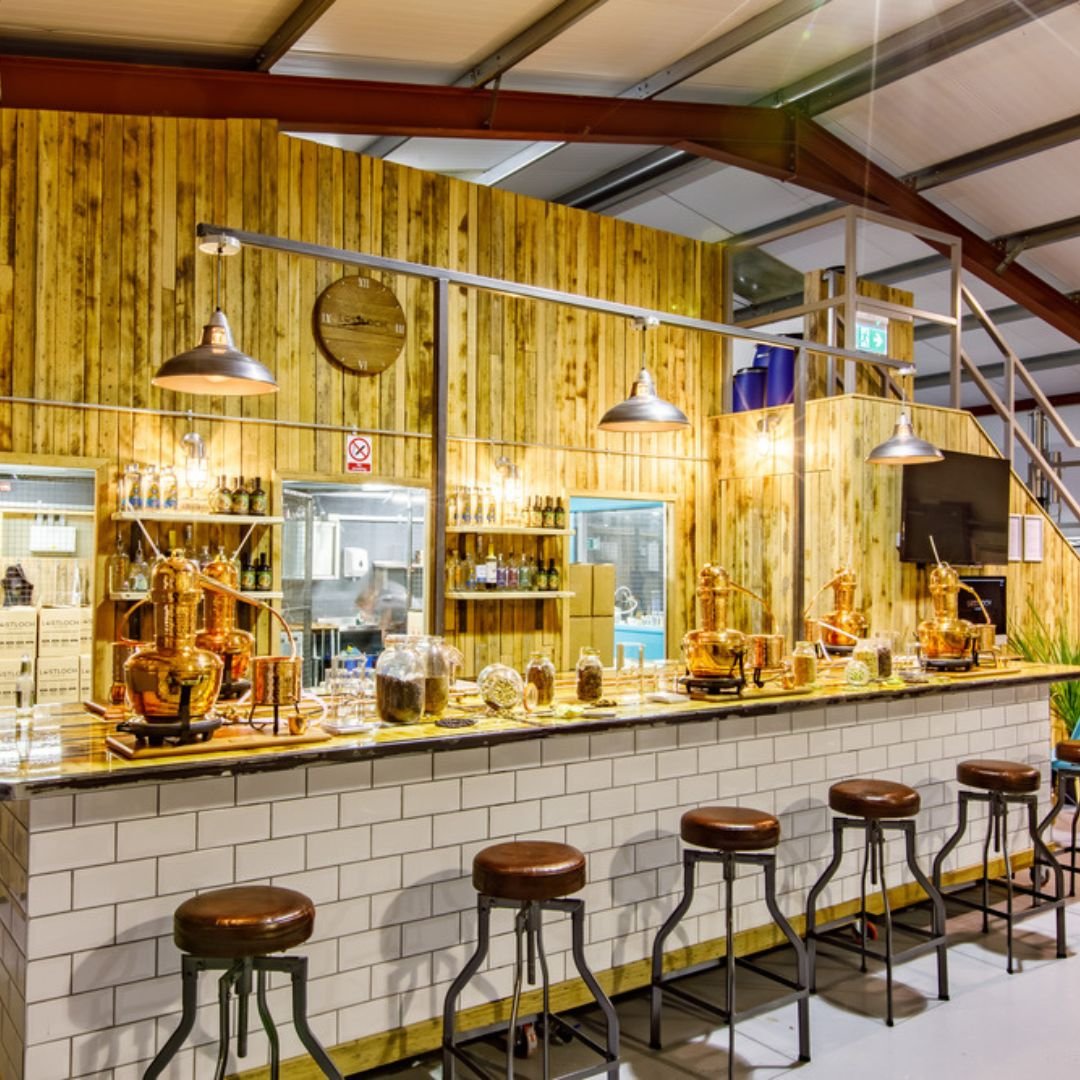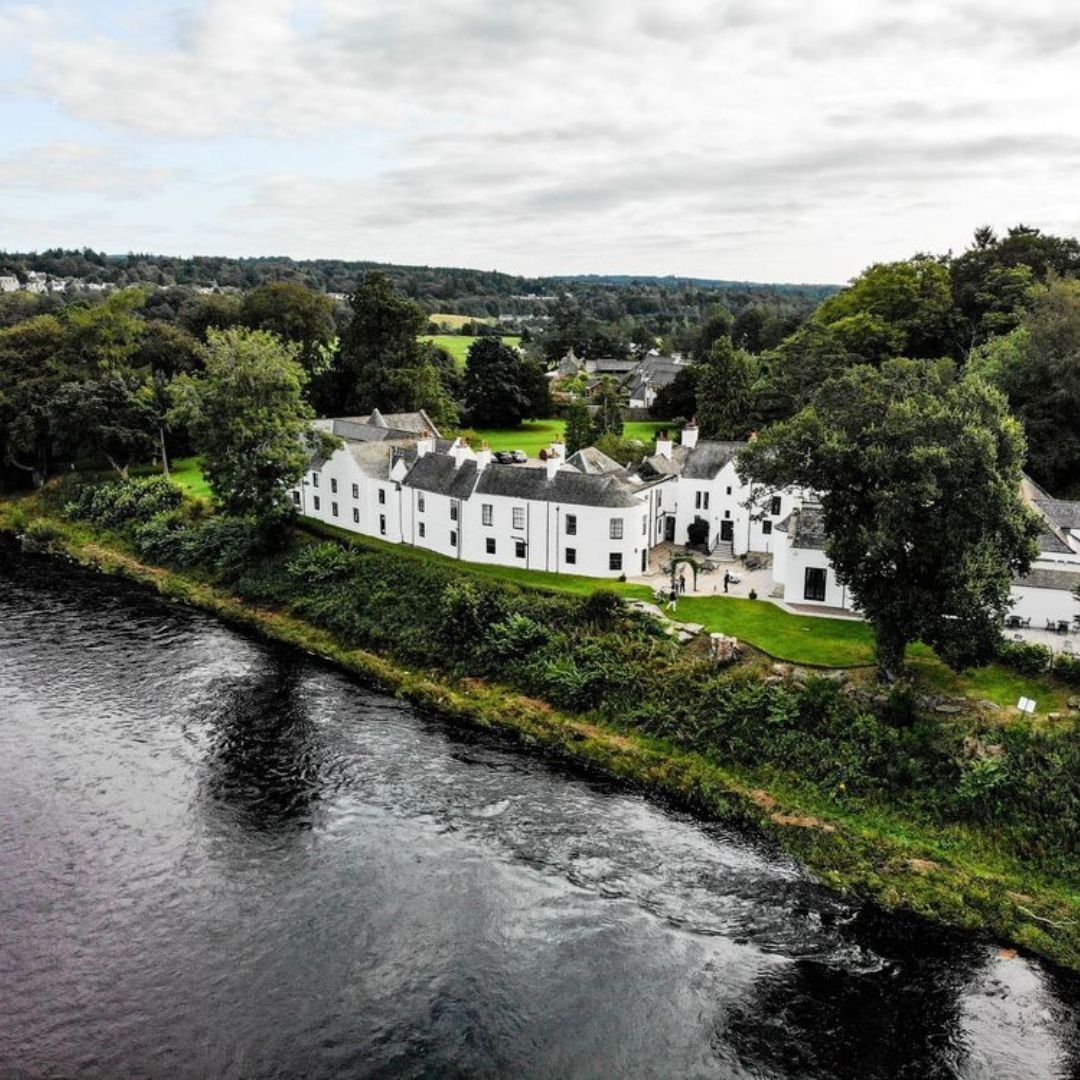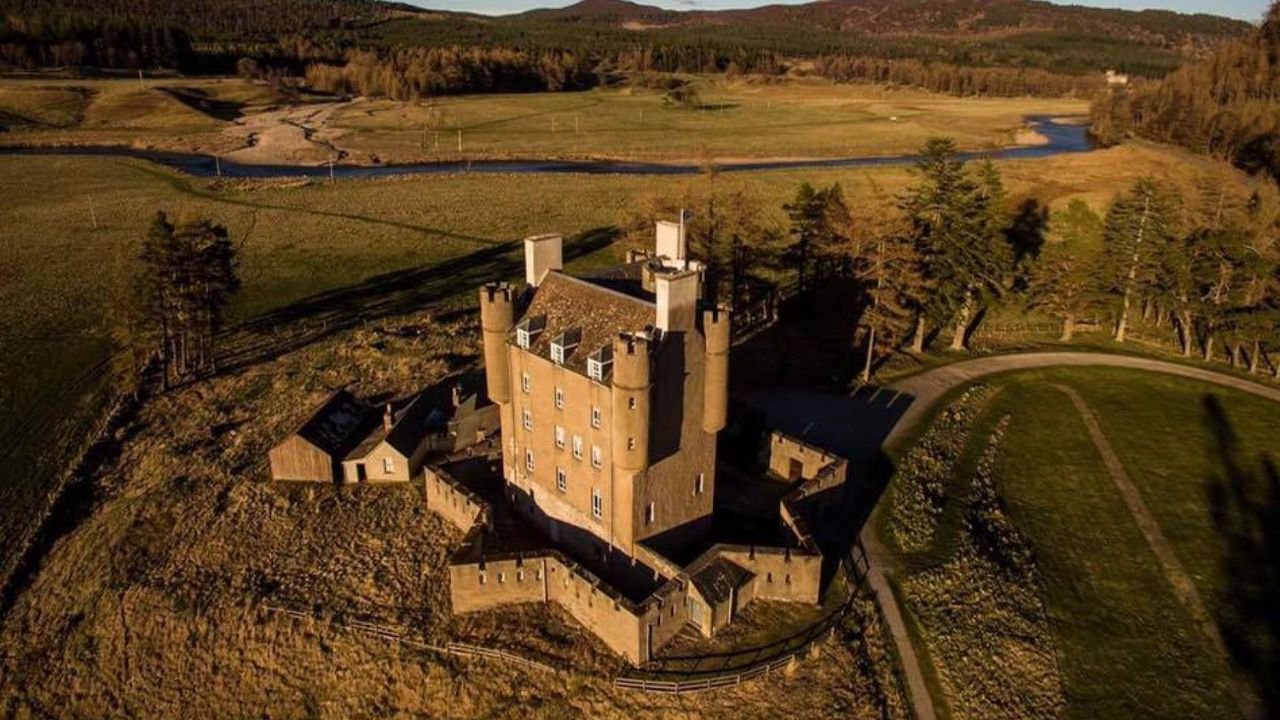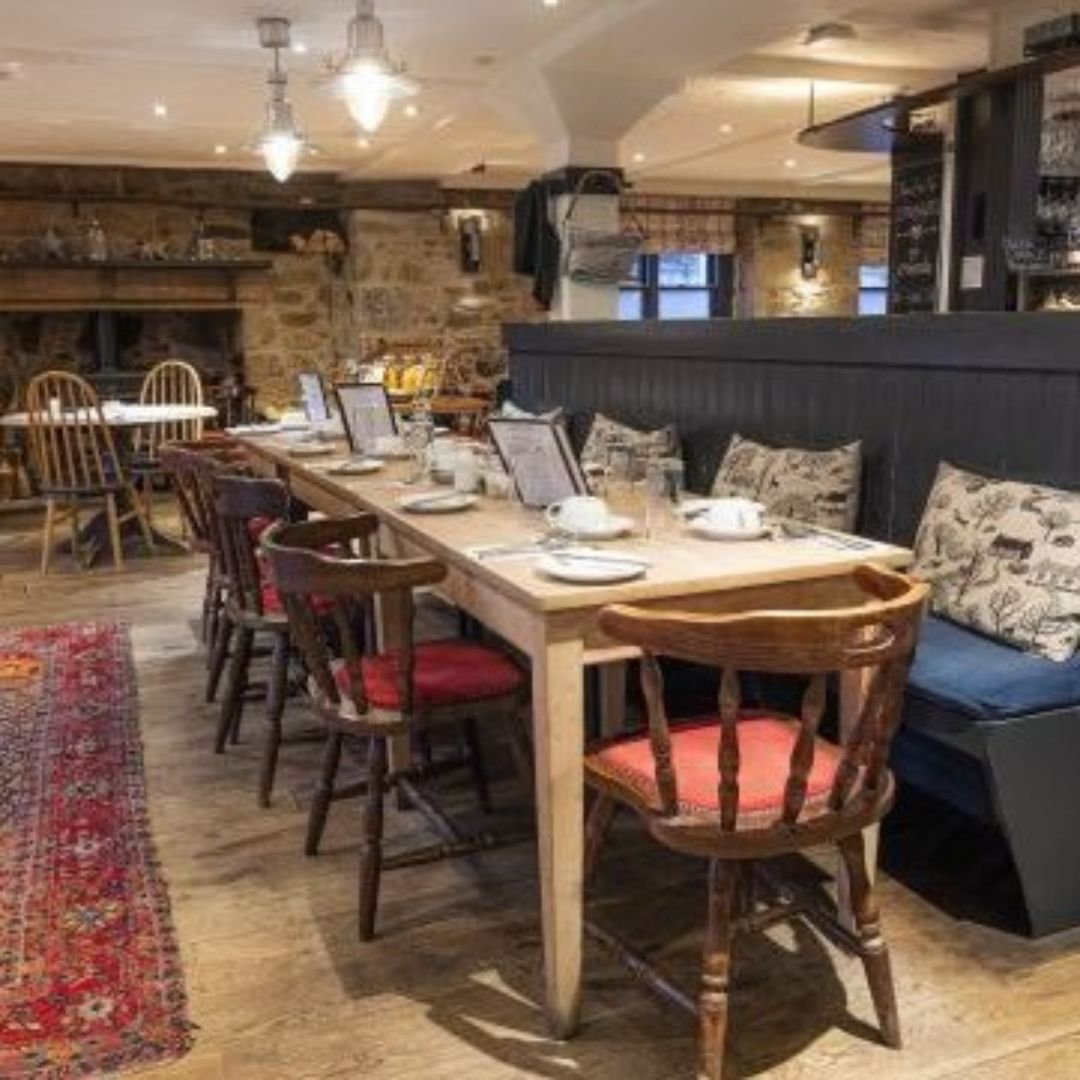Travelling through time.
Royal Deeside, in the North Eastern Highlands, is a remarkable region spanning only 50 miles or so from east to west along the banks of the mighty River Dee. The ‘Royal’ suffix came only after Queen Victoria set up home here in 1852, but it’s association with kings and powerful leaders is evident from many hundreds of years before that. The river’s name, the Dee means ‘Goddess’, and it’s clear that the river influences this area in far more varied ways than just lending it her name. Join us as we explore this fascinating corner of Scotland, in our latest Ginspired Day Trip to Royal Deeside. We’re calling this one ‘Travelling through Time’.
The land where time began
Whether you echo Mary Poppins or Lewis Carroll, every good story should start at the beginning, and there can be no better beginning than what may very well be the beginning of time. For that is what was recently uncovered in Royal Deeside.
An aerial survey showed signs of an early structure beneath a barley field close to Crathes Castle. Investigation began with the hope that the remains of a timber hall would be discovered, similar to one found at nearby Balbridie. This was thought to be around 1500 years old, and possibly built by travellers from Southern Europe who would have sailed to Scotland in boats made from wooden frames and animal skins. High hopes indeed, but the reality far exceeded the archaeologists’ expectations!
Getting here is easy especially if you’re in Aberdeen! The River Dee reaches the sea in the Granite City, so you could be said to be in Deeside without ever leaving the 30mph zone, but just a few miles west of this elegant cosmopolitan oil capital you reach the real Deeside. Soft green country, forests, farmland, castles, and of course the sinuous River Dee stitching it all together. Dundee and Perth are also within easy day tripping reach, and you can approach from the south on the Snow Road route of the A93 over Glenshee, which is a treat in itself. The railway line no longer reaches into Deeside, but there is a reasonable bus service running the length of the strath to assist travellers.
What they found was a series of pits and post holes, constructed in such a pattern that they can only have been used as an early solar or lunar calendar. The posts align with the midwinter sunrise and would have been a means for these hunter gatherers to track the changing seasons and measure the passing of time, rather than simply observe it. The markers even line up with a notch on the horizon between two hills, which would have allowed for the annual readjustment required between the lunar month and the solar year. Similar sites have been discovered in Mesopotamia (now largely Iraq), but the Warren Field site on the banks of the River Dee is far earlier, from around 9800 years ago.
As scientists from the University of Birmingham put it, ‘Could this be where ‘time’ began?’
They Rock!
Our Solar Calendar pre-dates the Pictish past of Scotland by some 3000-6000 years, but here in Royal Deeside we have carved stones, standing stone circles and recumbent stone circles all giving clues to the culture and beliefs of our fishing and farming ancestors. Some appear to be ceremonial sites, others used for burials, and yet more for following the moon and stars. The circle at Tomnaverie near Tarland appears to pay reverence to the mountain of Lochnagar, which is clearly framed above its recumbent stone ‘altar’ and between the two uprights at either side. Perhaps moons and mountains were the celebrities of the Pictish age and Tomnaverie was an early equivalent of Instagram? 😊
Time to talk about the GIN!
There’s a wealth of Scottish Gin produced in Aberdeen and out into Deeside. Some offer visitor experiences, others are brands you should look out for. All are unique!
Please always check ahead if you’d like to arrange a visit.
City of Aberdeen Distillery & Gin School – the first distillery in Aberdeen for nearly 80 years and home to the Aberdeen Gin School. Owned and run by two friends, the distillery is situated in the heart of the Scottish City of Aberdeen (the Silver City with the Golden Sands), within a historic railway arch where true small batch Aberdeen Gins are designed and distilled. The distillery is open to visitors who are invited to sample from the demi-johns (fill a bottle), enjoy a Distillery Tour, Gin Tasting Masterclass or even distil your very own 70cl bottle of gin at the Gin School Experience. Find out more about their visitor experiences here…
The House Of Botanicals is the home of an array of botanical based beverages including the House of Botanicals Old Tom Gins, the Dr. Adam’s Cocktail Bitters portfolio, and the forthcoming Italian influenced Pietro Nicola range; with liqueurs, amari and fortified wine in development.
Family run by Adam & Steffie Elan-Elmegirab, The House of Botanicals operates with a zero-waste ethos and ethically sources all our raw materials. Our sole desire is to create a range of unique, quality, hand-crafted products for the growing demands of the beverage industry, with the spotlight shone on botanicals and the influence they have in the world of mixed drinks. Find out more about their products here ……
Porter’s Gin – With a passion for creating better drinks, we turned the basement of our bar, Orchid, in Aberdeen, Scotland into one of the UK’s most innovative micro-distilleries. We built our own vacuum still, which distills botanicals at low temperatures, retaining their fresh, natural flavour. While working closely with the UK’s most respected Gin Distillers, we perfected the art of cold distilling botanicals. This respect for tradition while innovating results in exceptionally well balanced, refined, high quality gin recipes that bring together the best of classic and contemporary botanical distilling. Find out more about their visitor experiences here…
Launched in 2017, Still River is famous for producing the ‘world’s strongest gin’; its award winning 77% ABV strength Naked Uncut Gin.
Part of Deeside Distillery, Banchory is home to the Still River team and their experimental work led by head distiller Liam Pennycook. With the aim of producing original and innovative spirits, the distillery produces its own base spirit for various drinks, placing it alongside only a handful of other Scottish distilleries who use this approach of creating their base spirit from scratch. Find out more about them here……
The Tippling House, on Belmont Street in Aberdeen is the place to sample amazing gin cocktails. Look at the wonderful array here! Why not make it your late night favourite at the end of your Ginspired Day Trip to Royal Deeside. Also the home of Jindea Single Estate Tea Gin. Find out more by clicking here
Founded in 2015, Esker Spirits was established to embrace innovation and produce a Scottish gin that delivers a real taste experience.
Changing the thinking behind the traditional gin flavours and using silver birch sap, a feature of Royal Deeside, Esker challenged the traditional botanicals and gin recipes.
The Distillery is a place of stunning natural beauty. Esker Spirits is produced in the heart of Scotland on the Kincardine Estate, Royal Deeside.
Produced in copper stills in the distillery using over a dozen botanicals, including locally sourced silver birch sap, heather, citrus and spice. Find out more about their products here….
The Lost Loch Distillery just outside Aboyne. is home to Eenoo Gin. Micro-tours and full on gin schools are run regularly, but do get in touch to check the current situation. It’s a great opportunity to create your own gin as well as learning the art of spirit production. For more information, click here .
Maryculter House Hotel on the western fringes of Aberdeen is the ideal place to begin or end your Deeside Day Trip. The hotel dates back to the 12th Century and has links to the Knights Templar. They have a house gin, The Knights Gin, which is perfectly served with Templar Tonic! Find out more here.
Ancient & Modern
Take yourself to the beautiful memorial of nearby Migvie Kirk, on the Tillypronie Estate, lovingly restored by the Laird Philip Astor in honour of his late parents. A precarious Pictish Cross Slab is found in the kirkyard, with ornate carvings of a horse and rider. The deconsecrated kirk itself is deceptively simple from the outside, but once inside the carved oak doors replicating the design on the Pictish stone, a wondrously light space filled with artworks and artisan furniture, all by local creatives, is uncovered. There are no signs to guide you here, you have to find it yourself, that’s part of the charm. So it’s our secret, a gift from me to you!
Charms & Legends
Back to the River, our Goddess. A 2000 year old tradition has it that we should cast silver or song into the water for good luck. In my case I’d better save up, as my singing voice is unlikely to summon anything positive. This may be an antidote to another legend, not unique in these parts, that of the water sprite or Kelpie. Now recognisable from the glorious sculptures at The Helix near Falkirk, Kelpies were thought to be shapeshifters, sometimes appearing as men, other times as writhing, twisting horses. They could be kind and generous for needy folk, but they could also turn wicked and vengeful, luring the unwary to their watery lairs and inevitable doom (think Private Fraser from Dad’s Army – dooooom!). There are many tales of Kelpies in this area, and parents have long used the stories as a way of making their children fearful of getting too close to the waters edge. No bad thing indeed. However, these tales can make a lasting impression, as an old lady, interviewed just before her ninetieth year recalled how her father (a farmer) always kept a halter on a hook beside the back door, ‘just in case the Kelpie came’, in the hope he might be able to control it. She was a firm believer, as clearly her father had also been!
What a Racket!
Molehills
Ballater is well known for its plethora of Royal Warrants above shop doorways. The Royal Warrant is granted from a member of the Royal Household to a business which supplies it with goods or services, to a very high standard. The nearby Highland home of the British Royal Family at Balmoral Castle, means that many local businesses from the town have achieved this accolade over the years.
At present, Royal Warrants can only be granted by HM Queen Elizabeth II, HRH The Duke of Edinburgh or HRH The Prince of Wales, Duke of Rothesay. To belong to the Royal Warrants Association is a highly cherished honour. Warrant holders must follow strict rules regarding the use of the warrant or risk losing it, as happened to Rigby & Peller in 2018. Apparently, they disclosed too much detail in an account of their role as purveyors of undergarments to HM Queen Elizabeth. A storm in a D cup perhaps? You decide.
Another unique watery feature of Royal Deeside is the impressive Burn O’Vat. It’s a natural pot hole carved out of rock by stones grinding together underneath a retreating ice shelf, some 14,000 years ago. These days, easily found near to Loch Kinord, it’s a lovely excuse for a walk amid birch trees and bird song to the narrow entrance, and then into the Vat itself. It is said that legendary cattle thief Rob Roy McGregor hid his stolen animals here, as the noise of the rushing water muffled their moos to passers-by! Above the waterfall is a stone where Jacobite survivors are said to have met after Culloden to plan their next, but ultimately futile, move.
Mountains
Balmoral Castle itself is just a few miles west of Ballater, and available to visit when the family are not in residence. It isn’t possible to see inside the Castle itself but there is a good visitor centre, exhibition spaces and you do get to meet the Queen’s own ponies, which are well kept and very polite!
Above Balmoral rises the majestic mountain of Lochnagar, and amidst its foothills are a number of stone cairns, built on the instruction of Queen Victoria mainly to commemorate the marriages of her children. The largest however was built in honour of her beloved Albert, after his death in 1861. There are various walks to take in the cairns and the viewpoints each affords. Visit www.walkhighlands.com for a detailed route plan. The climb up Lochnagar is well worth it, especially on a clear day. The route along the shores of Loch Muick (pronounced mick), is a joy. Be careful if the cloud is low however as there are some steep and dangerous drops, so plan ahead please.
A quiet life
The Royal family have always enjoyed their time spent at Balmoral and seen it as a relaxing place, where they could move around freely and without scrutiny. In Queen Victoria’s time, it’s said that staff and estate workers were instructed to ignore her if they saw her out walking or riding. They were simply to pretend they hadn’t seen her at all! Preference was given to estate tenants who agreed to make their front room (the best room in the house) over to the Queen should she be passing and have need of it. Any members of the family in residence should retreat to the remainder of the house and lock the adjoining door. One cottage had two front doors especially to allow access to Her Majesty, and she was known to call in for refreshments on a whim, which must have been rather alarming for the inhabitants as she wasn’t known for her tolerance or good humour.
The Balmoral Estate is not huge by local standards, so often walks or rides would take the royal parties onto neighbouring properties. One such route carried Her Majesty Queen Elizabeth onto the nearby Invercauld Estate where a hillside bothy took her fancy. When her courtiers wrote to the estate owner telling him of her desire to visit regularly, the bothy was very discreetly made over, simply furnished, and supplied with a small stove and the facilities to make a hot drink.
I recall the story of a local man who lived on the estate and who was a reserve firefighter. One day having received a ‘shout,’ he headed at speed along the estate road to get to the fire station and out to the emergency. Hurtling around a corner he almost collided head on with a Landrover driven by a lady in a floral headscarf, who glowered at him in annoyance. He waved, drove on, and then realised who he’d nearly mown down! The next day he wrote a letter of humble apology explaining his mission and his ‘need for speed’, only to receive a very gracious handwritten reply completely exonerating him of his misdemeanour, and which is no doubt a family heirloom by now!
Bridging the gap
Of the thirteen bridges which span the Dee, five are suspension bridges. The Crathie Bridge was built in 1834 to take carriages to and from Balmoral Castle. When Queen Victoria purchased Balmoral in 1852 however, she felt a more substantial structure was required, and so Prince Albert commissioned the doyen of Victorian Engineering, Isambard Kingdom Brunel, to design The Balmoral Bridge. This was completed in 1857, just two years before Brunel died. That bridge is still very much in use today, and if you choose to visit Balmoral during your Ginspired Day Trip, you’ll walk right over it, just like Victoria!
Heading further west the road crosses the beautiful Invercauld Bridge. Built in 1859 and paid for by Prince Albert, the Bridge of Dee, connected the military road network with the route north to Ruthven Barracks and Corgarff Castle. All part of General Wade and Major Caulfeild’s plan to subdue the Highlanders by making travel around Scotland easier for government troops. Many of these routes form the basis of our modern road network today.
Reaching Braemar itself there are a variety of independent businesses to explore, coffee shops and gift shops to enjoy, and now the splendidly refurbished Fife Arms Hotel. Always a grand structure, it had rather passed its sell-by date, but has seen huge investment, great creative flair, and a real desire to bring global travellers to this part of the Highlands. Well worth a visit. Check out ‘The Flying Stag’ Bar. I’ll not spoil the surprises here, but there’s a wide-ranging menu and live music on Friday evenings if you can stay around. If your pockets are deep enough, an overnight stay here will match any well known, luxury establishment, but it does come at a price. They excel on a huge whisky collection, and thankfully the list of Scottish Gin is catching up fast!
If Stags Could Fly
Where to eat, drink, shop and even stay a while….
The Boat Inn, Aboyne, a delightful restaurant, bar with gorgeous rooms too. Tower O’Ess, a romantic retreat for two on the Glen Tanar Estate, and Douneside House – luxury hotel, pool & fitness centre with award winning cuisine. There truly are some beautiful places to stay in Royal Deeside.
Many businesses in Ballater carry the Royal Warrant insignia, so shop like a Royal while you can! Alternatively, eat at the The Rothesay Rooms, which HRH The Prince of Wales, Duke of Rothesay took a personal role in developing, after first a flood and then a fire took their toll on the town’s businesses.
In Braemar you can visit the Horn Shop and also Lamont Sporrans, where you can have one made to your own design. To tassel or not to tassel, that is the question!
From the traditional Balmoral Arms, (formerly The Deeside Inn)at Ballater, and the luxury of the Fife Arms in Braemar to the charming hideaway of the Loch Kinord Hotel.
The Steading Bar in nearby Strathdon serves local food in the bar, as well as local gin too, while the relaxed atmosphere of the Potarch Coffee Shop is a welcome part of any day trip. Banchory’s The Strong Water Co, stocks not only local gins, beers and whiskies, but also fine foods and all sorts of yummy treats. Check out their website for more information.
Banchory’s elegant Tor-na-Coille Hotel makes a very comfortable base for your Royal Deeside Day Trip, or be more independent in a self catering cottage on the gorgeous Glen Tanar Estate. The Kildrummy Inn in nearby Strathdon has a wonderful atmosphere, only matched by the glorious food!
Yellow Welly Tours from Braemar, can plan a whole day trip for you, and uncover some of Royal; Deeside’s secrets along the way! The Lodge on the Loch near Aboyne has spa facilities to relax at the end of your day trip, with a Scottish Gin of course. Visit nearby Corgarff Castle in its remote Highland Glen and discover what life was like as a redcoat soldier.
Foos yer doos?
Royal Deeside sits in the north east of Scotland, partly within the Cairngorm National Park, and completely within the region of the Doric language. Doric is thought to come from the Greek for local or rustic, and like most dialects, its origins go way back into the farming and fishing heritage of Scotland’s north east corner. It’s still widely spoken, so a few words might be useful whilst you’re visiting! Here’s some to play with:
And lesson twa’ (two)
The ‘F’ word
Far ye gaan? = Where are you going?
Fit’s at? = What’s that?
Fan ye aff? = When are you going?
Foo mony? = How many?
Fa’s at? = Who is that?
Fit wye = Why – as in why are you going there
Far div ye bide? = Where do you stay?
Fit like? = How are you?
Fan div ye yoke? = When do you start work?
Foo’s yer doos? = (How are your doves/pigeons?)How are you?
Fit wye’s at noo? = Why is that now?
Far = Where – as in where are you going
Fit = What – as in what are you going there for?
Fan = When – as in when are you going
Foo= How – as in how are you getting there
Fa = Who – as in who are you going with
Fit wye = Why – as in why are you going there
And, saving the most important to the last:
Fa’s roond is it? Whose turn is it to buy the Scottish Gin?
If you’re enjoying learning the Doric, see if you can follow the words in this old old song ‘Willie MacKintosh’, sung in the dialect. The singer comes from Tarland, even though the Fiddichside and Auchindoun referred to, are both in Speyside which is slightly further north.







